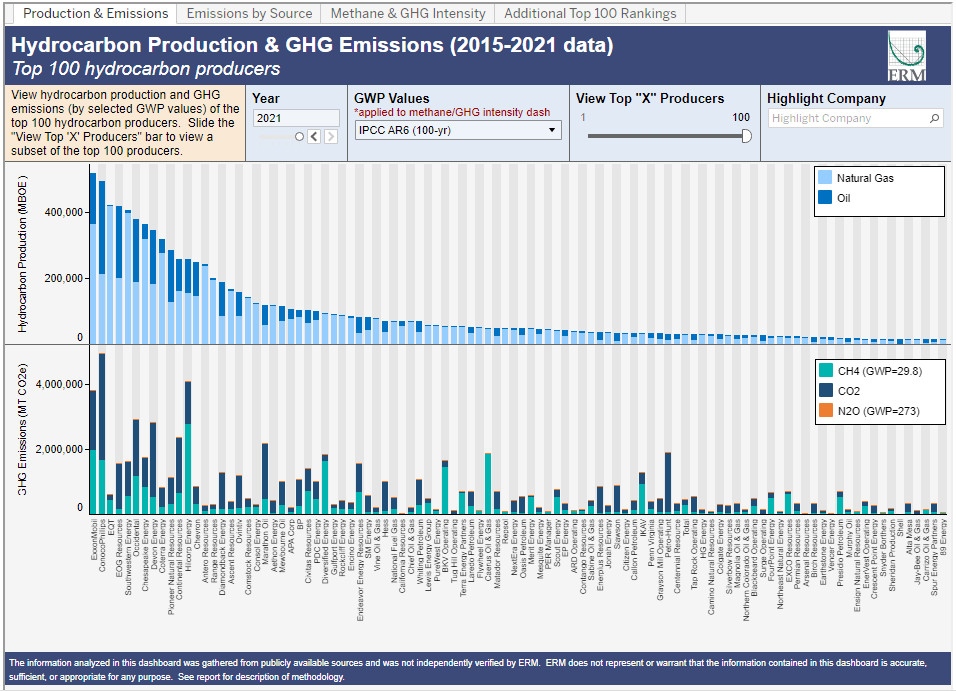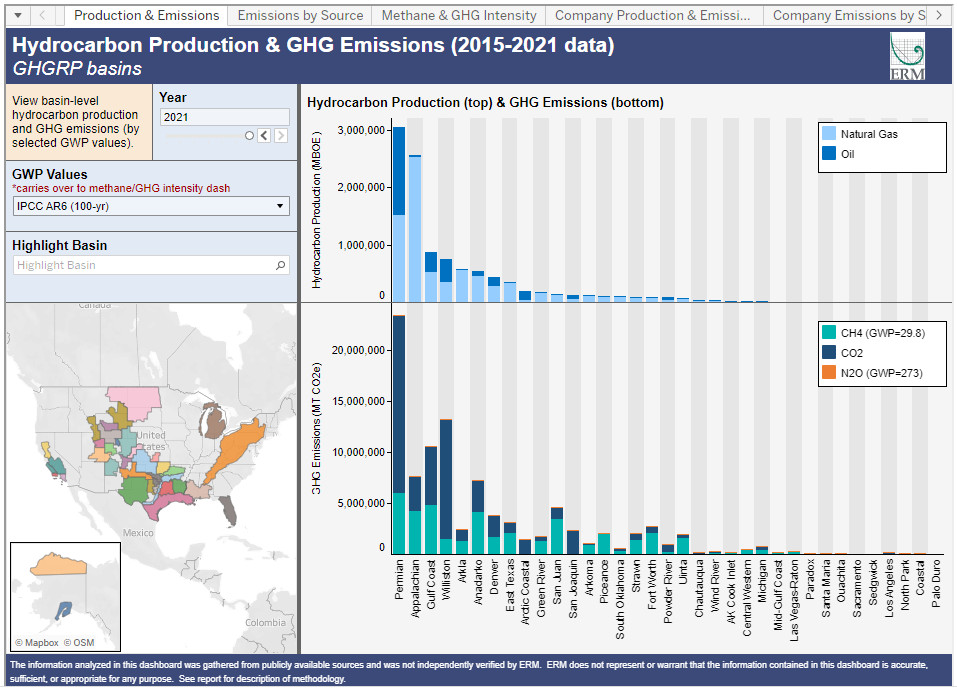
Date: 2025-10-05 Page is: DBtxt003.php txt00024810
EMISSIONS
BENCHMARKING US METHANE AND OTHER EMISSIONS
Benchmarking Methane and Other GHG Emissions Of Oil & Natural Gas Production in the United States
BENCHMARKING US METHANE AND OTHER EMISSIONS
Benchmarking Methane and Other GHG Emissions Of Oil & Natural Gas Production in the United States
Original article: https://www.sustainability.com/thinking/benchmarking-methane-ghg-emissions-oil-natural-gas-us/
Peter Burgess COMMENTARY
We do not really lack for data, but lack for 'management'. The 'management' of emissions by the global oil and gas industry including in the USA is weak to non-esistant.
The static tables included in this note are stark ... more informative interactive versions of these tables are available at the link above.
TVM has been concerned for a long time that the 'management metrics' being used in the corporate world are no longer fit for purpose and need refreshing to suit the modern world. The sad reality is that corporate management accounting and reporting has remained essentially in the same place for more than a century and a half when it was required for corporate entrepreneurs to report fairly and without lying to investors. Not much has changed. There are essentially no universal requirements for the corporate world to operate responsibly with respect to society and the environment ... rather their responsibility if mostly seen as a singular responsibility to maximise performance relative to owners and investors. Yes ... there has been some change over the past few years, but it is small and for all practical purposes meaningless.
The conversation has to change ... and a starting point is for the triple bottom line (TBL) to be as big a talking point as corporate profit and return to investors. An element of this change has to be for 'the public' to create and manage the information flows from the corporates into the public space rather than having this totally under the control of the corporates and the legacy auditors and PR firms that they employ.
Another initiative that is required is to desaggregate information so that it becomes 'relateable' for more people. There are two ways that such a desaggregation can be implemented: one is for social, environmental and financial information to be computed and disclosed for every product and its variants. Another is for there to be reporing of social, environmental and financial information for each discreet location of a corporate's operations.
There is a lot of power in information that informs. It is no accident that corporate owners have established strong flows of information to investors and potential investors and extremely weak flows of information into society in general and about environmental impacts. This is not about small errors at the margin, but about massive programs of misinformation that have gone on for decades and continue unabated to this time with little meaningful action to get things changed.
I qualified as a Chartered Accountant with Cooper Brothers & Co in London in the 1960s and have some understanding of how the corporate world has been operating for the past 60+ years. There has been a massive improvement in productivity and profitability, but society and the environment have been compromised in many unacceptable ways. It is disappointing that this has happened and I believe that something must be done about it. A step in the right direction would be to make management metrics more comprehensive and better structured so as to be effective for the complex fast moving world that exists today.
Peter Burgess
On behalf of Ceres and Clean Air Task Force, this analysis was updated in May of 2023 comparing the total reported methane, carbon dioxide, and nitrous oxide emissions — as well as relative emissions intensity — of over 300 U.S. oil and natural gas producers.
The report highlights wide variation in the emissions intensity (the amount of methane or greenhouse gas emissions per unit of production) between producers, even those with operations of a similar size, and provides comparisons both within the same basin and nationwide. These differences reflect the nature of different hydrocarbon basins, as well as companies’ equipment and operational practices.

